Feeling a bit stuck with your creative flow? Don’t worry; we’ll thaw those creative juices by the end of this post.
A Unique Selling Proposition (USP) or Unique Selling Point is the distinctive element that sets your product or service apart from the competition, injecting value for your customers.

While there are multiple reasons to adopt a USP, its primary function is enabling customers to distinguish your business swiftly. The decision of whether customers want your product or service often occurs in a matter of seconds.
To assist you in capturing attention during those fleeting moments, we’ve curated a collection of the best unique selling proposition examples from various industries. Let’s dive in!
What is a Unique Selling Proposition (USP)?
The Unique Selling Proposition (USP) represents the distinct benefit a product offers to its customers. Coined by E. Jerome McCarthy in his 1960 book “Basic Marketing: A Managerial Approach,” the USP is a tool for businesses to stand out within their competitive landscape.
Considered a cornerstone of marketing strategy, the USP acts as a differentiator in a product category. To make your USP effective, you should answer two critical questions:
- What can I offer that my competitors cannot?
- What do my customers already want that they don’t know they want yet?
To ensure success, your USP should be clear and concise, sticking with the customer. This concept is crucial in marketing because it helps your product stand out in a crowded market.
A USP comprises five fundamental components:
- Benefits: What draws people in.
- Emotive: Appeals to customers on an emotional level.
- Key Selling Points: Declares superiority over similar products.
- Key Difference: Highlights what makes your company stand out.
- Competitive Advantage: Speaks to your track record or experience in the field.
Top USP Examples in 2024:
1. Canva
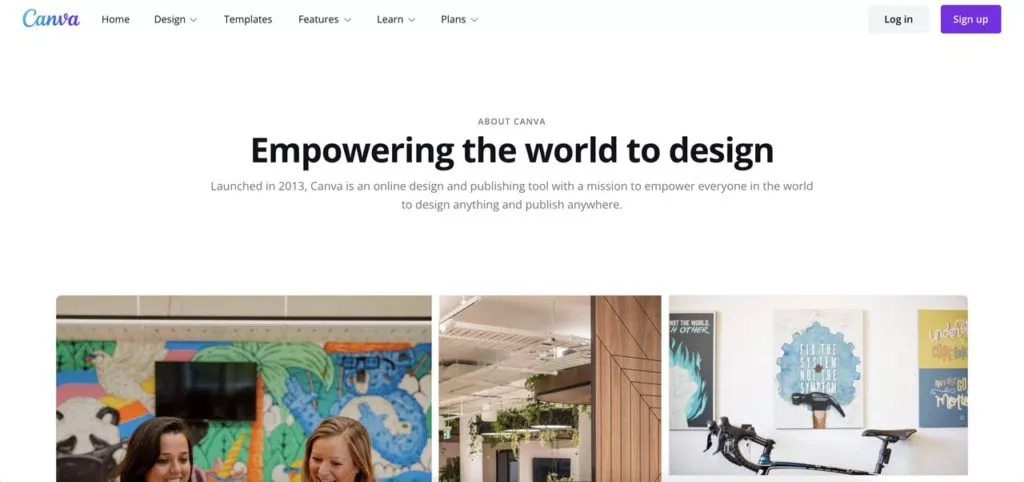
Canva, a prominent online graphic design platform, boasts one of the most compelling Unique Selling Propositions (USPs) within the Software as a Service (SaaS) industry. Their motto, “Empowering the world to design,” succinctly captures the essence of their service. Canva’s focus is on simplifying the graphic design process, liberating users from the constraints of expensive and complex design software like Adobe Photoshop and Illustrator.
Key Elements:
- Product Simplicity: Features like drag-and-drop functionality and ready-made templates.
- Affordability: Canva’s low prices make graphic design accessible to a broader audience.
- Competitive Advantage: Positioned as a user-friendly alternative to high-priced design software.
2. Nike

Nike, a leader in the sports and footwear industry, presents a powerful USP: “Bring inspiration and innovation to every athlete in the world. If you have a body, you are an athlete.” Nike’s unique selling proposition extends beyond sports; the asterisk and subsequent statement, “if you have a body, you’re an athlete,” broaden their target audience.
Key Elements:
- Inclusivity: Nike targets not just athletes but everyone with a body.
- Affordability and Quality: Implies affordability coupled with athlete-level quality.
- Brand Values: Affirms the brand’s commitment to supporting athletes and sports activities.
3. Coca-Cola
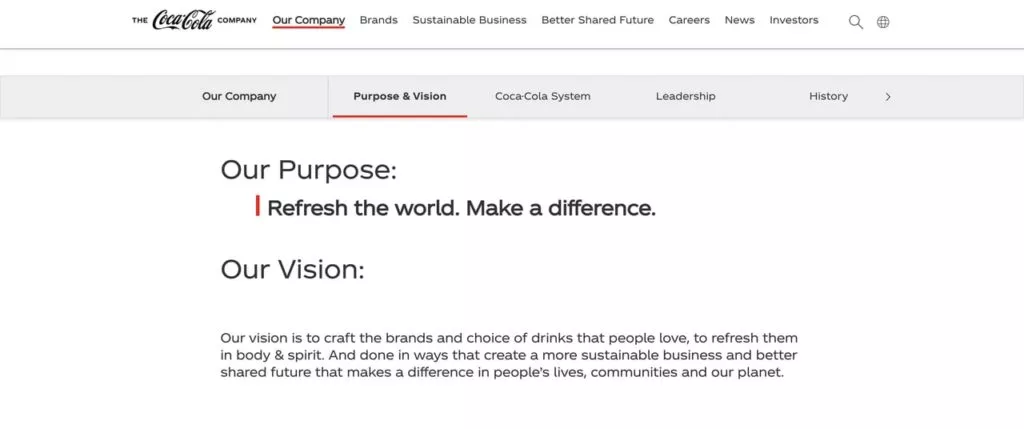
Coca-Cola’s USP is encapsulated in the succinct phrase: “Refresh the world. Make a difference.” This multinational beverage company uses a dual-sentence approach to highlight the refreshing nature of its products while also conveying a commitment to making a positive impact on the world.
Key Elements:
- Sustainability: “Refresh the world” communicates a commitment to sustainability.
- Social Responsibility: “Make a difference” encourages consumers to contribute to positive change.
Learn about growth hack here.
4. HubSpot
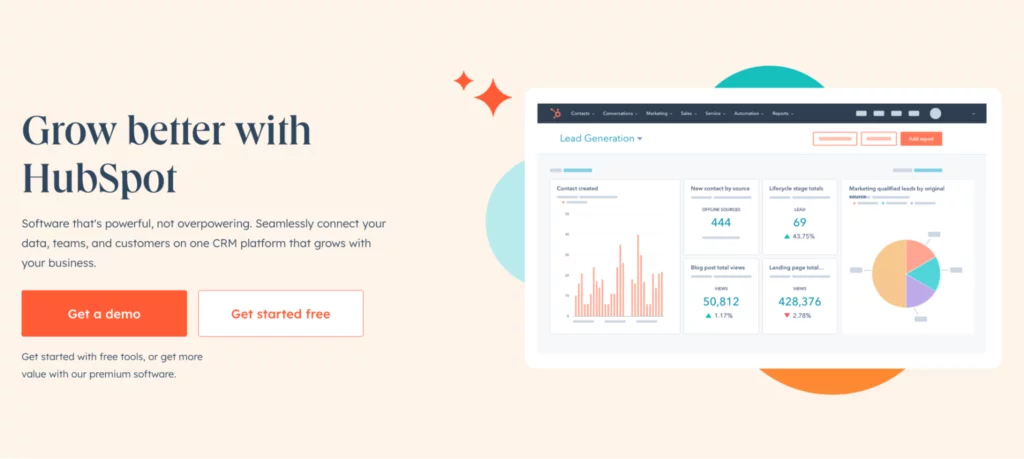
HubSpot’s USP, “Grow better with HubSpot,” encapsulates its position in the SaaS market. HubSpot provides an all-in-one platform for managing CRM, sales, marketing, and customer service. The focus on growth suggests scalability and a seamless customer journey.
Key Elements:
- All-in-One Platform: Manages various business aspects in a unified platform.
- Free Tools: Emphasizes free tools for starting and expanding businesses.
- Scalability: Communicates that HubSpot grows alongside your business.
5. Stripe

Stripe, an online payment processing service, emphasizes its role as “Payments infrastructure for the internet.” This USP not only underscores its reliability for global SaaS brands but also positions itself as a suitable choice for any online business operating on the internet.
Key Elements:
- Trustworthiness: Implies a high level of trust from numerous global companies.
- Universality: “For the internet” suggests suitability for all online businesses.
6. Shopify
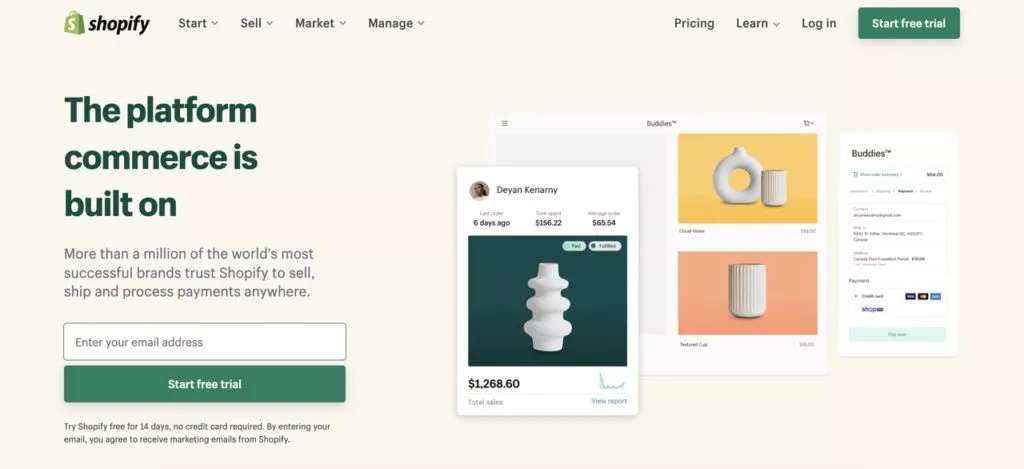
Shopify, a leading e-commerce platform, defines its USP as “The platform commerce is built on.” This succinct phrase captures the essence of Shopify’s role in enabling businesses to launch and thrive in the e-commerce space.
Key Elements:
- Accessibility: Allows anyone to create an online store without coding knowledge.
- Comprehensive Platform: Encompasses all the necessary tools to run an online store effectively.
7. Hiver
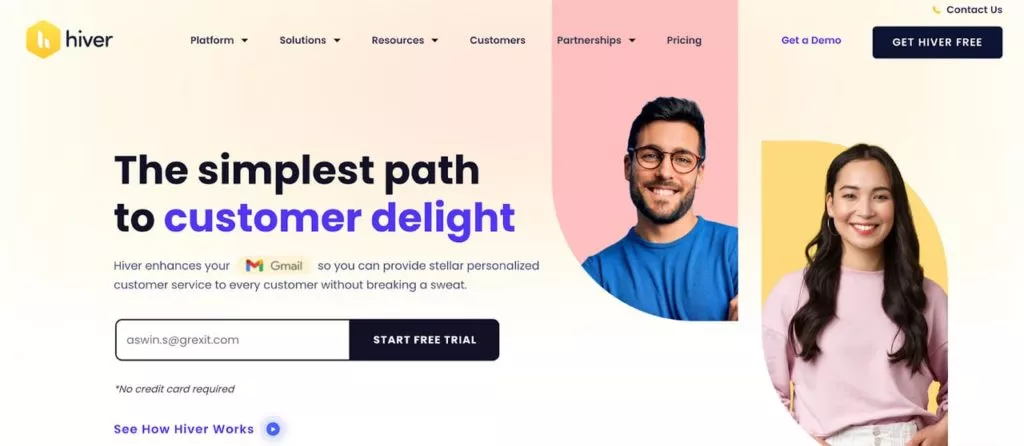
“The simplest path to customer delight.” Hiver, a specialized customer service software tailored for Google Workspace users, prides itself on providing the simplest path to customer delight. This unique selling proposition (USP) positions Hiver as an invaluable tool seamlessly integrated with Gmail. The software empowers teams to harness the full functionality of a helpdesk and customer service platform without leaving the familiar Gmail interface.
Key Features:
- Seamless Integration: Hiver seamlessly integrates with Gmail, ensuring a unified user experience.
- In-Tab Customer Service: Support reps can manage customer inquiries directly within the Gmail interface.
- Intuitive Interface: Users can work effortlessly within the platform without the need to learn a new interface.
- Multi-Channel Support: Hiver offers multi-channel support, consolidating email, chat, and social media interactions in one platform.
Hiver’s USP demonstrates its commitment to delivering exceptional customer service through a streamlined and intuitive interface, meeting the needs of both users and visitors.
8. M&M
Among sweet treats, M&Ms distinguishes itself with a memorable Unique Selling Proposition (USP): “Melts in your mouth, not in your hand.” This catchy slogan highlights the candy’s unique hard sugar coating that prevents melting, offering consumers a mess-free and enjoyable experience.
Key Elements:
- Preservation of Quality: Emphasizes the preservation of the chocolate inside the candy.
- Distinctive Feature: The hard sugar coating sets M&Ms apart from other candies.
- Memorability: The catchy slogan makes the brand memorable for consumers.
M&Ms’ USP effectively communicates the product’s key features and ensures a delightful experience for candy enthusiasts.
9. FedEx
FedEx, a renowned delivery and shipping service, crafts a bold and customer-centric Unique Selling Proposition (USP): “When it absolutely, positively has to be there overnight.” This straightforward promise focuses on the urgency and reliability of FedEx’s delivery services, making a memorable impact.
Key Elements:
- Customer-Centric: Shifts the focus to the customer’s urgent delivery needs.
- Bold Promise: The unequivocal promise stands out and is easy to remember.
- Infrastructure Assurance: Assures customers that FedEx has the infrastructure to deliver overnight.
FedEx’s USP effectively conveys its commitment to fast and reliable delivery, building trust among customers.
10. Starbucks
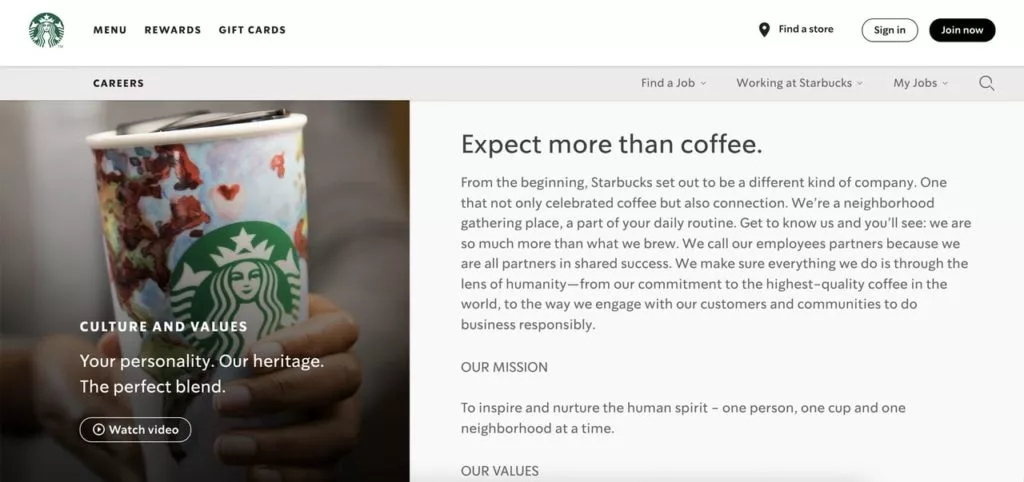
“Expect more than a coffee.” Starbucks, a global coffeehouse chain, goes beyond the realm of coffee with its impactful Unique Selling Proposition (USP): “Expect more than a coffee.” This USP aligns with Starbucks’ mission to foster connection and create positive associations with daily life experiences.
Key Elements:
- Beyond Coffee: Positions Starbucks as more than just a coffee provider.
- Brand Mission: Communicates the company’s mission of fostering connections.
- Versatile Associations: Allows customers to associate Starbucks with various positive moments.
11. The North Face
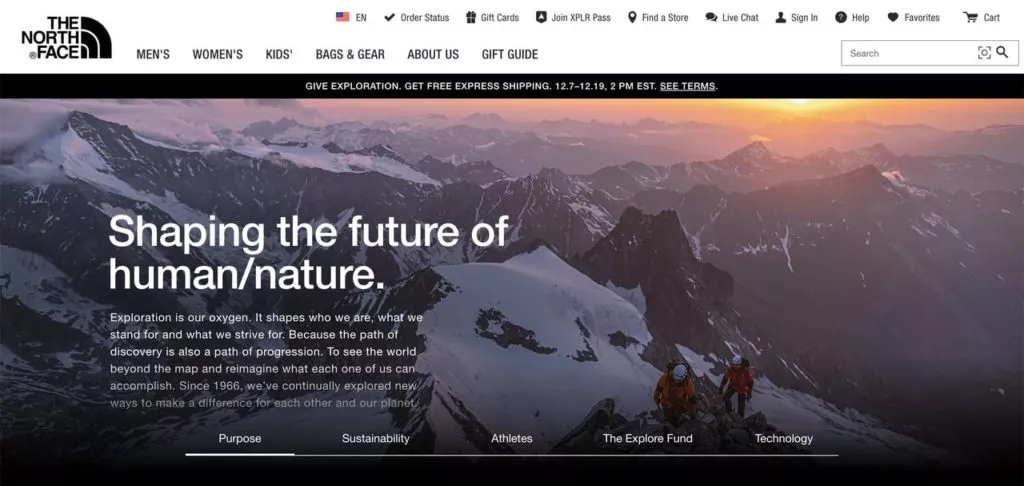
The North Face, a renowned outdoor recreation products company, intricately weaves its connection with nature into its Unique Selling Proposition. Founded by two hiking enthusiasts, the brand’s USP signifies a profound commitment to outdoor exploration and sustainability.
Key Elements:
- Nature Connection: Emphasizes the brand’s deep ties with hiking and nature.
- Sustainability Hint: The slash between human and nature hints at a commitment to sustainability.
- Innovation in Outdoor Wear: Highlights the brand’s dedication to innovation in outdoor wear.
The North Face’s USP effectively communicates its ethos, positioning itself as a pioneer shaping the future of the harmonious coexistence of humans and nature.
Unique Selling Proposition – A Comprehensive Guide
Crafting an effective Unique Selling Proposition (USP) is a strategic process that involves understanding your audience, pinpointing the problem your product solves, highlighting your unique benefits, and creating a compelling promise. Here’s a step-by-step guide on how to write a compelling USP:
Step 1: Identify Your Target Audience
Before crafting your USP, have a deep understanding of your target audience. Recognize their needs, preferences, and pain points. This foundational step ensures your USP resonates with the right people.
Step 2: Jot Down the Problem Your Product Solves
Clearly articulate the problem your product or service addresses. This step is crucial as it lays the foundation for your USP. It’s about understanding the challenges your audience faces and how your offering provides a solution.
Step 3: List What Benefits Set You Apart
Identify the unique benefits your product brings to the table. These can include features, advantages, or experiences that differentiate your offering from competitors. Focus on aspects that provide value and solve the identified problem effectively.
Step 4: Clearly Define Your Promise
Formulate a clear promise that encapsulates the essence of your product’s benefits. Your promise should be specific, relevant, and compelling. It should address the needs of your target audience and convey a commitment to delivering value.
Step 5: Combine All in One Paragraph
Compile the insights from the previous steps into a coherent paragraph. This paragraph should succinctly convey the target audience, the problem addressed, unique benefits, and the promise. Keep it informative but concise.
Step 6: Condense It in One Sentence
Now, distill your paragraph into a single, powerful sentence. This sentence should encapsulate the core message of your USP, making it easy to remember and communicate. Aim for clarity and impact.
Conclusion:
A well-crafted USP is a potent tool for both marketing and sales, fostering a connection with customers. However, several pitfalls should be avoided:
- Too Wordy: Keep your USP concise, capturing meaning with brevity.
- Lack of Uniqueness: Ensure your USP is genuinely unique to your brand.
- Truthfulness: Avoid making promises that your product or service can’t fulfill.
- Limited Exposure: Integrate your USP across all platforms for a consistent brand identity.
Crafting a compelling USP requires strategic thinking and an understanding of your audience. Avoiding common pitfalls ensures your USP resonates effectively, leaving a lasting impression on your target market. 🎬 What USP example from this guide resonated with you? Share your thoughts in the comments below!
FAQs on USP:
What is the purpose of a Unique Selling Proposition (USP)?
The primary purpose of a USP is to communicate the unique benefits that set a product or service apart from competitors. It serves as a powerful tool in marketing and sales presentations, establishing a connection with customers and highlighting why your business is the superior choice.
How long should a Unique Selling Proposition be?
An ideal USP should be concise, typically one or two sentences. Keeping it short and impactful ensures that it captures attention and is easy to remember. Avoid unnecessary details and focus on the key elements that differentiate your offering.
What is the difference between Value Proposition and Unique Selling Proposition?
While the value proposition outlines what customers receive for their payment, the unique selling proposition emphasizes why customers should choose your business over others. The USP focuses on creating an emotional connection, highlighting the distinctive qualities that make your offering superior.



